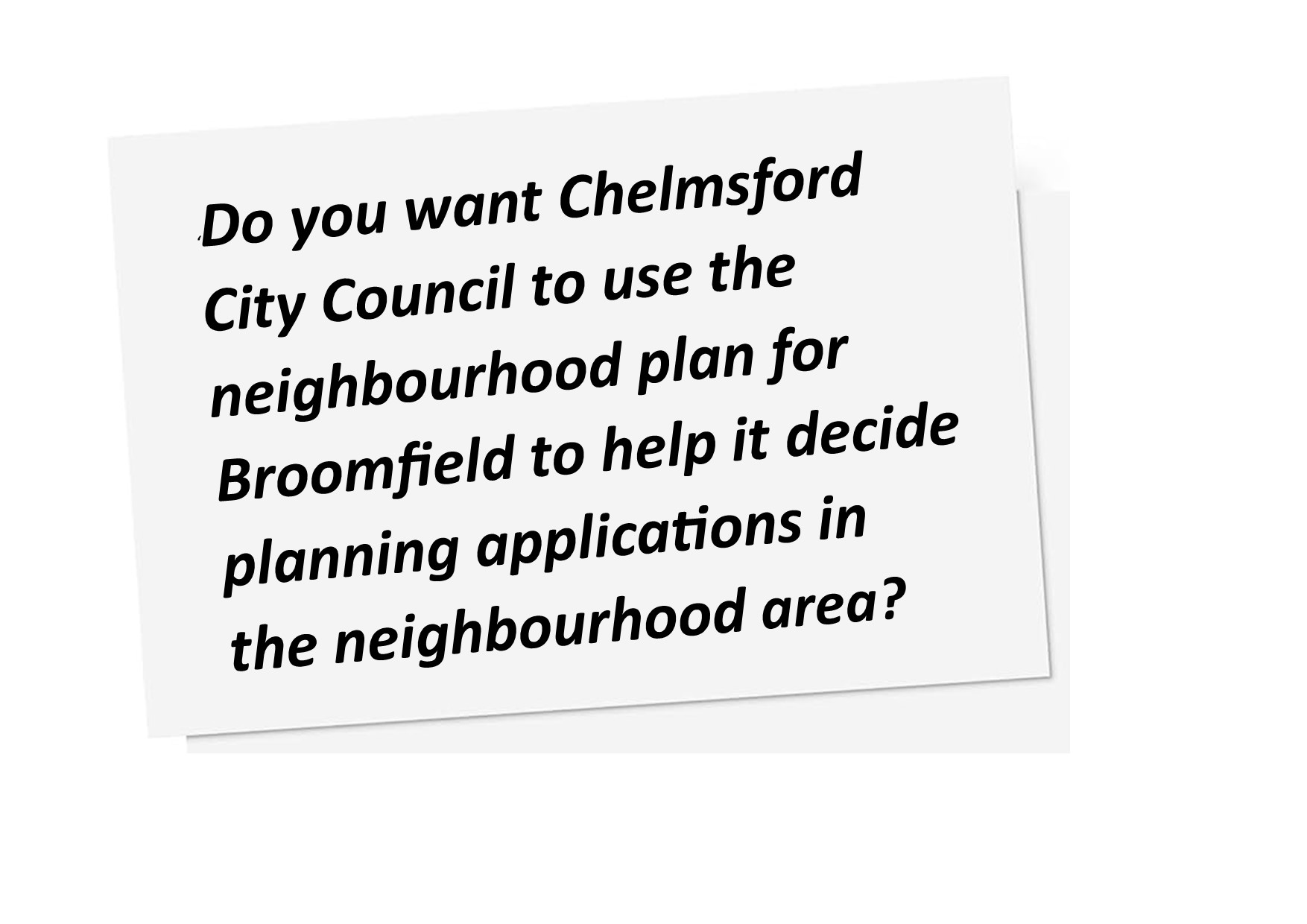Polling Cards Arrive for Referendum
Published: 31 January 2025
We’ve been working on the Broomfield Neighbourhood Plan for nearly 9 years! During this time there’s been much consultation with local residents – questionnaires, surveys, drop-in discussions etc - to make sure the Plan is in line with their wishes. Now residents get to give the final go-ahead or not in the form of a local referendum.
The referendum will be held on Thursday 27th February. Anyone living in Broomfield Parish who is registered to vote can take part. It works just like a normal council election:
- You should have received a polling card already from the City Council
- On 27th February, go to your usual polling station. This will either be the Village Hall or Chelmer Valley High School – your polling card will say which
- Alternatively, you can apply for a postal vote instead of voting in person - just like a normal election.
- When you see the ballot paper, instead of the names of candidates to vote for, there‘ll be a question:

- Vote ‘yes’ if you want the Neighbourhood Plan to be implemented; or ‘no’ if you don’t.
If the majority of residents voting say ‘yes’, the Neighbourhood plan will be approved (or ‘made’). If the majority vote ‘no’, it won’t. There’s no minimum turn-out needed – it goes on the votes of those who do.
The referendum is organised and paid for by the City Council. Full details, including for postal and proxy voting, can be viewed on their website:
https://www.chelmsford.gov.uk/voting-and-elections/upcoming-elections/
What difference will it make if residents vote to approve the Plan?
If the result is ‘yes’, the planners and inspectors will have to base their decisions on the Broomfield Neighbourhood Plan, as well as the Chelmsford Local Plan, when they make decisions about all planning applications in Broomfield.
If the result is ‘no’, they will continue to make their decisions based just on the Chelmsford Local Plan and other ‘higher-level’ plans like the Essex-wide Minerals and Waste Plan and national planning policy.
All neighbourhood plans have to be in ‘broad conformity’ with the relevant local plan. The difference is usually that a neighbourhood plan adds a lot more local, specific detail. For instance, regarding the countryside and landscape:
- Chelmsford Local Plan discourages development that would make urban areas join up (‘coalesce’) with villages like Broomfield. The Neighbourhood Plan goes further and specifically defines the land between Broomfield village and the Chelmsford urban area as a Settlement Buffer to protect this gap. It makes it very clear which land should be protected to avoid ‘coalescence’ (the joining-up of different settlements).
- The Local Plan discourages development in the Rural Area, including the Green Wedge. It aims to keep development within existing settlement boundaries, except where new estates are specifically planned. The Neighbourhood Plan goes a lot further:
- It recognises 15 pieces of land as Local Green Space – which means they are treated like Green Belt
- Two larger landscapes are designated as Valued Landscape to make sure they are conserved and enhanced
- It outlines 29 Key Views, which new development would need to respect
- It is based on a detailed Landscape Appraisal that outlines the sensitive rural areas of Broomfield. Any new development proposals will have to take account of this Appraisal.
So, in summary, if the Neighbourhood Plan is given the green light at the referendum, planners and inspectors will need to take account of much more detailed local Broomfield perspectives. If it gets a red light at the referendum, planning decisions would continue to be based on more general Chelmsford-wide policies.
Before you decide how to vote, do read the Plan or the 'Neighbourhood Plan in a Nutshell' (which takes max 5 minutes to read)